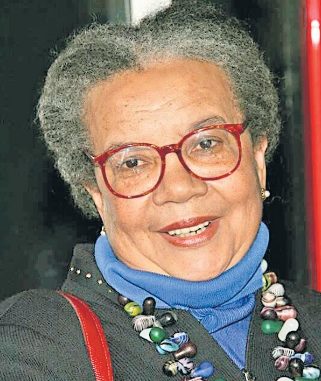By Marian Wright Edelman
As a teenager, many of Barbara Johns’s wildest fantasies were about a surprising subject: a new school. “My imagination would run rampant — and I would dream that some mighty man of great wealth built us a new school building or that our parents got together and surprised us with this grand new building and we had a big celebration — and I even imagined that a great storm came through and blew down the main building and splattered the shacks to splinters — and out of this wreckage rose this magnificent building and all the students were joyous and even the teachers cried . . .”
Then a day came when 16-year-old Barbara decided to put her dreams into action. “It was time that Negroes were treated equally with whites, time that they had a decent school, time for the students themselves to do something about it. There wasn’t any fear. I just thought — this is your moment. Seize it!”
The year was 1951, and Barbara was a junior at segregated Robert R. Moton High School in Prince Edward County, Virginia. As her younger sister Joan later remembered, “Most of the school supplies that we got were torn and tattered, and we didn’t have enough supplies to write with. The school we went to was overcrowded. Consequently, the county decided to build three tarpaper shacks for us to hold classes in. A tarpaper shack looks like a dilapidated black building, which is similar to a chicken coop on a farm . . . It was a very difficult setting for trying to learn. And I remember we were always talking about how bad the conditions were but we didn’t know what to do about it. So one day, my sister and a group of students that she chose decided to do something about it.”
The “something about it” Barbara did was to organize and lead the student body at Moton High in a strike in April 1951. More than 400 students walked out of classes to protest their school’s terrible conditions and demand facilities more like the county’s white high school. NAACP attorneys Spottswood Robinson and Oliver Hill became involved after Barbara’s persistent calls to their Richmond office and after the students agreed they were willing to fight for an integrated school instead of just a better segregated one.
The legal case against the Prince Edward County school board was ultimately bundled with four similar cases by NAACP attorneys in Brown vs. Board of Education et al., leading to the landmark Supreme Court decision outlawing segregation in public schools in 1954.
Courageous Decision
Barbara Johns’s courageous decision to do something about her dream helped change history, just like the brave actions of many children and youths during the Civil Rights Movement. Sadly, the triumph of Brown vs. Board of Education was not the end of the story for Black children in Prince Edward County.
As disgraceful as the conditions were at their old woefully unequal schools, more disgraceful was what came next. Instead of complying with the U.S. Supreme Court decision, the state of Virginia pursued a campaign of “massive resistance,” enacting a variety of new laws and policies designed to prevent public school desegregation. More court decisions followed declaring Virginia’s actions illegal.
While other districts eventually gave in, Prince Edward County’s Board of Supervisors continued to refuse to desegregate their schools and voted instead in June 1959 to shut down the county’s entire public school system.
A number of white county schools quickly reopened as segregated “private schools,” supported by tuition grants from the state and tax credits from the county. They became the model for similar “segregation academies” across the South. But no schools were available in Prince Edward County for Black children or poor white families in the largely rural community who couldn’t afford the modest tuition charged at the new private schools. The denial of public education lasted for the next five years.
In a March 1963 speech marking the centennial of the Emancipation Proclamation, Attorney General Robert Kennedy said: “We may observe with much sadness and irony that outside of Africa, south of the Sahara, where education is still a difficult challenge, the only places on earth known not to provide free public education are Communist China, North Vietnam, Sarawak, Singapore, British Honduras—and Prince Edward County, Virginia. Something must be done about Prince Edward County.” It took another Supreme Court decision to finally force the county to reopen its public school system with desegregated schools in 1964.
Seventy years after the students’ strike, the former Moton School is now a National Historic Landmark and museum honoring “the birthplace of America’s student-led Civil Rights Revolution.” Barbara Johns’s parents sent her to live with relatives in Montgomery, Alabama to finish high school. She then attended Spelman College and Drexel University, raised five children with her husband Reverend William Powell, and became a librarian in the Philadelphia Public Schools before passing away in 1991.
Today, when there is dissension over what kind of history schools should be allowed to teach, we must continue making sure children know the full truth about stories like this and the cloud of witnesses like Barbara Johns Powell who sacrificed for a more just America. Her legacy of struggle for a quality education for every child is still the unfinished business of the Civil Rights Movement and of America.
Marian Wright Edelman is founder and president emerita of the Children’s Defense Fund.





